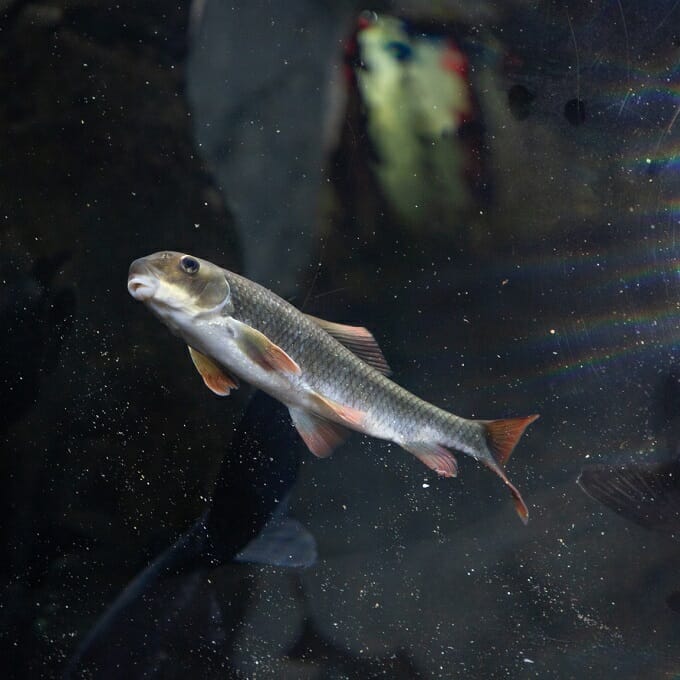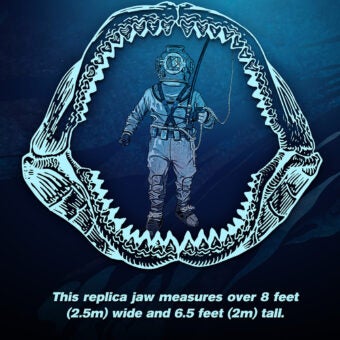-
Size
28 inches (71 cm) -
Diet
Aquatic insects, bivalves -
Range
North America -
Habitat
Rocky pools and slow runs in small to medium rivers
Physical Characteristics
- The robust redhorse sucker is a heavy-bodied fish that reaches lengths of 28 inches (71 cm) and can weigh about 18 lbs. (8 kg).
- It has large molar-like pharyngeal teeth, which are used for crushing mollusks.
- The species has a bronze coloration on its back and sides. The adult is faintly striped along its lower sides. The juvenile has an intense red color on the caudal fin.
- The male has large prominent tubercles on the snout, head, anal, and caudal fins during the spawning season.
Animal Fact
The robust redhorse sucker spawns in course gravel habitats.
Diet / Feeding
- Aquatic insects, native bivalves and the invasive Asian clam.
Range / Habitat
- Wild populations of the robust redhorse sucker are now known to exist only in several rivers in Georgia, North Carolina and South Carolina.
- The species inhabits silty to rocky pools and slow runs in small to medium rivers. It is also found in impoundments.
- It spawns in course gravel habitats.
Reproduction & Growth
- Spawning occurs from late April through early July when water temperatures reach 64-68 F (18-20 C).
- The spawning act almost always involves a female flanked on either side by two males. The fertilized eggs are buried in the gravel.
- The young robust redhorse sucker remains in the gravel after hatching until it absorbs the yolk sac and can swim.
Conservation Status
- “Endangered” on the IUCN Red List.
- The Georgia Department of Natural Resources lists it “endangered”. It is one of the most threatened species in Georgia and North America.
Additional Information
- The lifespan of this sucker is at least 25 years.
- In 1870, Master naturalist Edward Drinker Cope first described the robust redhorse sucker based on a single six-pound specimen that had been collected from the Yadkin River in North Carolina, after that all mention of the robust redhorse disappeared from the scientific literature.
- In 1980 and 1985, unidentified fish specimens were collected from the Savannah River (the boundary between Georgia and South Carolina) and the Pee Dee River in North Carolina and South Carolina, respectively. However, they were not properly identified as robust redhorse suckers because the name had been misapplied to a related species.
- In August 1991, fishery biologists with the Georgia Department of Natural Resources, Wildlife Resource Division, collected five unrecognized fish from the Oconee River downstream of Sinclair Dam while conducting an environmental assessment.
- The unknown fish were sent to renowned ichthyologists who unraveled the taxonomic mystery determining that the Oconee specimens and the previously collected unknown fish were the lost robust redhorse sucker.
- Once the taxonomic error was discovered and the 1980, 1985, and 1991 specimens were correctly identified, the fish that had been “lost” to science for 122 years was “rediscovered.”
Sources
- www.fishbase.org
- www.robustredhorse.com/
- Protected Animals of Georgia. Georgia Department of Natural Resources, pg. 161






